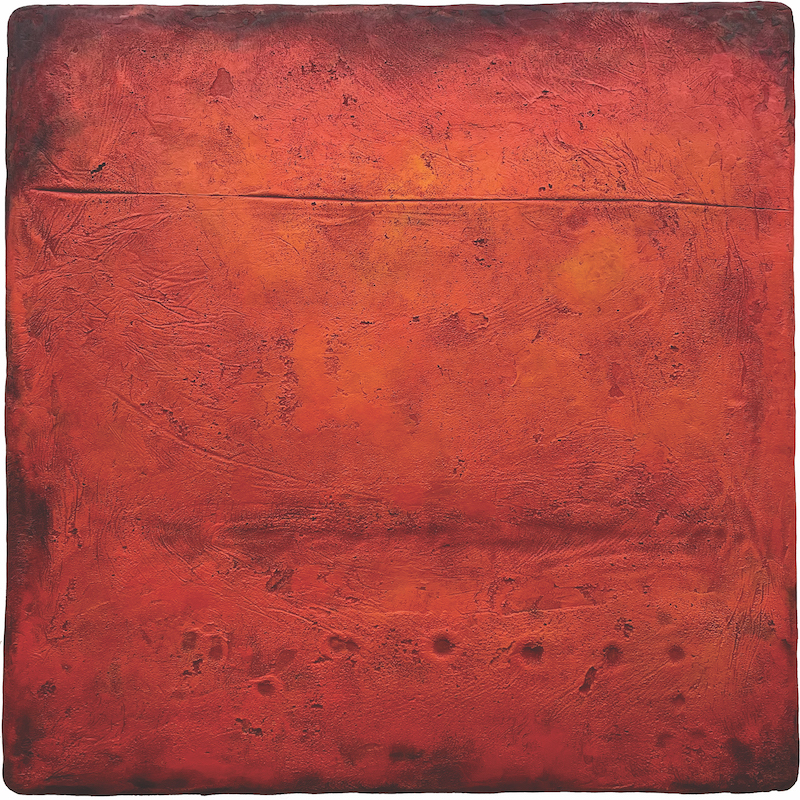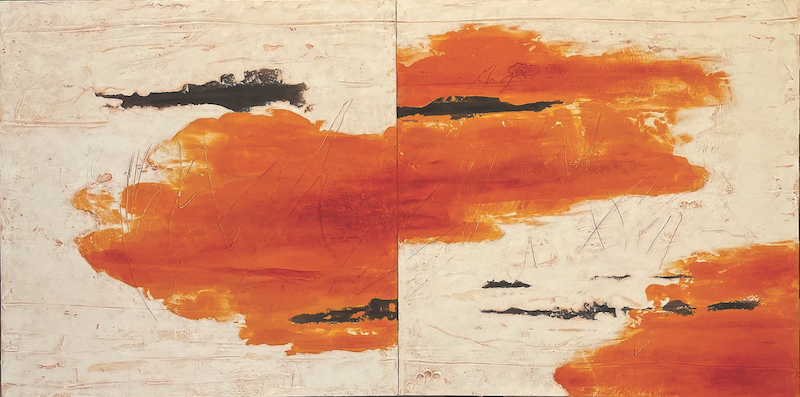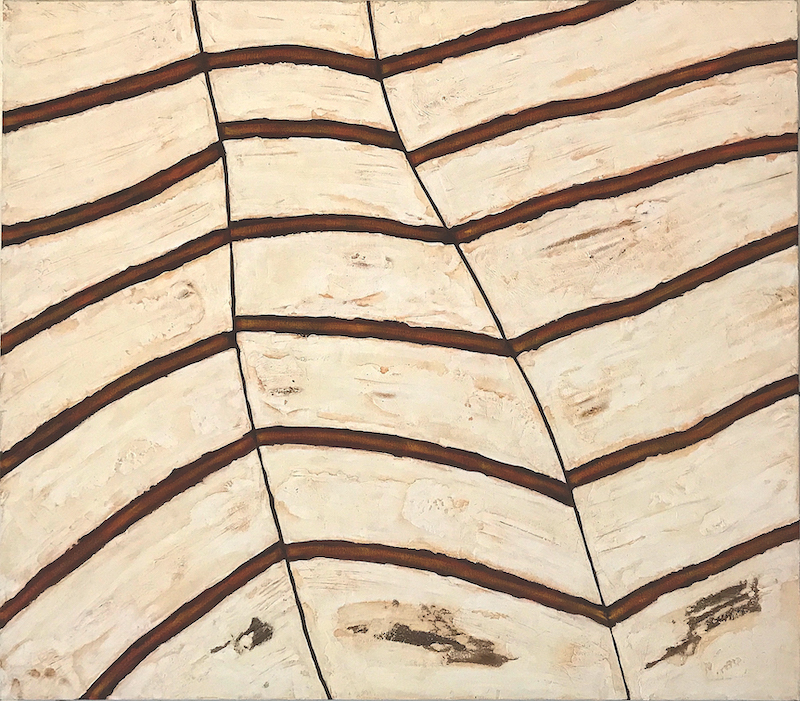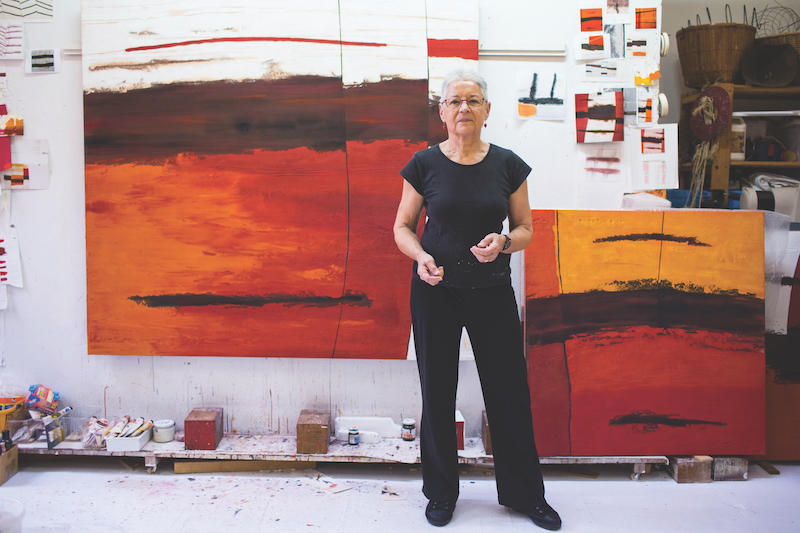Like many artists who have relocated to Australia, Sydney-based Kate Briscoe has found her muse in the ancient platforms upon which this country thrives. Her practice employs not a method of representation but rather of excavation, digging deep into strata, rifts, splits, and faults to create often large-scale, enveloping works that submerge the viewer deep beneath Australia’s rocky earth.
“As an artist I have always viewed landscapes in terms of structure, form and textures, from a geological perspective,” Briscoe says. “To understand even a little bit about geology gives you special eyes through which to see a landscape. You see back in time to where rocks liquify and flow, and seas petrify. What is revealed is a description of time passed.”
Briscoe’s geological process often begins early in the morning, usually after a long walk or gym session. Her bright, airy studio is converted into an archaeological dig-site, unveiling the inner workings of locations across Australia including K’gari (Fraser Island), Jinibara (Glasshouse Mountains), Arnhem Land, the New South Wales South Coast, and the Snowy Mountains. She then consults the detailed research collected from her time spent at each location, using this as a launchpad to create her unique interpretations of the typical landscape painting. “I record these landscapes with drawings and photographs, focusing especially on the surfaces of the rocks with splits and folds — and the colours: reds, whites, and yellows,” she says.
What emerges from this research are works that reflect the landscapes they are inspired by, layered with grit and rich oranges and browns. They appear almost weathered, as if as ancient as their source material. While some works host a clear focus on texture, others are striped with bold lines, reflective of the hidden geology below the earth’s surface. “The way the forms are arranged and how lines and stresses come through is absolutely crucial to the final compositions,” says Briscoe. “Otherwise, you would not get that sensation that a split in the rock is imminent.”
More recently, Briscoe has begun expanding her painting practice into the field of sculpture, developing a series of works composed of papier-mâché and acrylic that read almost as archaeological relics, or impressions taken from the rock shelves by which she is so inspired. Named either Hot Rockface or Cold Rockface, the works range from instantly recognisable scorched reds to deep charcoals, drawing inspiration from the Kimberley region in Western Australia. Scratched and blistered, the works offer a glimpse into the ancient formations that would remain otherwise unseen. Briscoe builds models of a hidden history that speak to the physical memory of the earth itself, to the moments that we mould and shape, and to the traces that we leave behind, beneath the surface.

Kate Briscoe, Hot Rockface – Burnt, 2022. Mixed media on board,
62 x 62 x 2cm.

Kate Briscoe, Sandstone Rockface Depot Beach #2, 2022. Mixed media on canvas 91 x 182cm diptych.

Kate Briscoe, Sandstone Rockface – Kimberley #4, 2022. Mixed media on canvas, 107 x 122cm.

